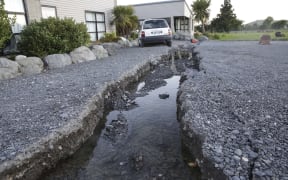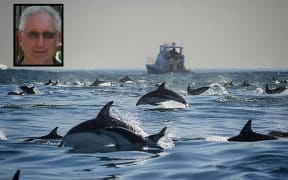First Person - The grassy coastal headlands of Marlborough gave little away. A small slip here and there, nothing obvious to the untrained eye from the sky. Near the hills of Seddon there was not the damage you would expect from a magnitude 7.8 earthquake.
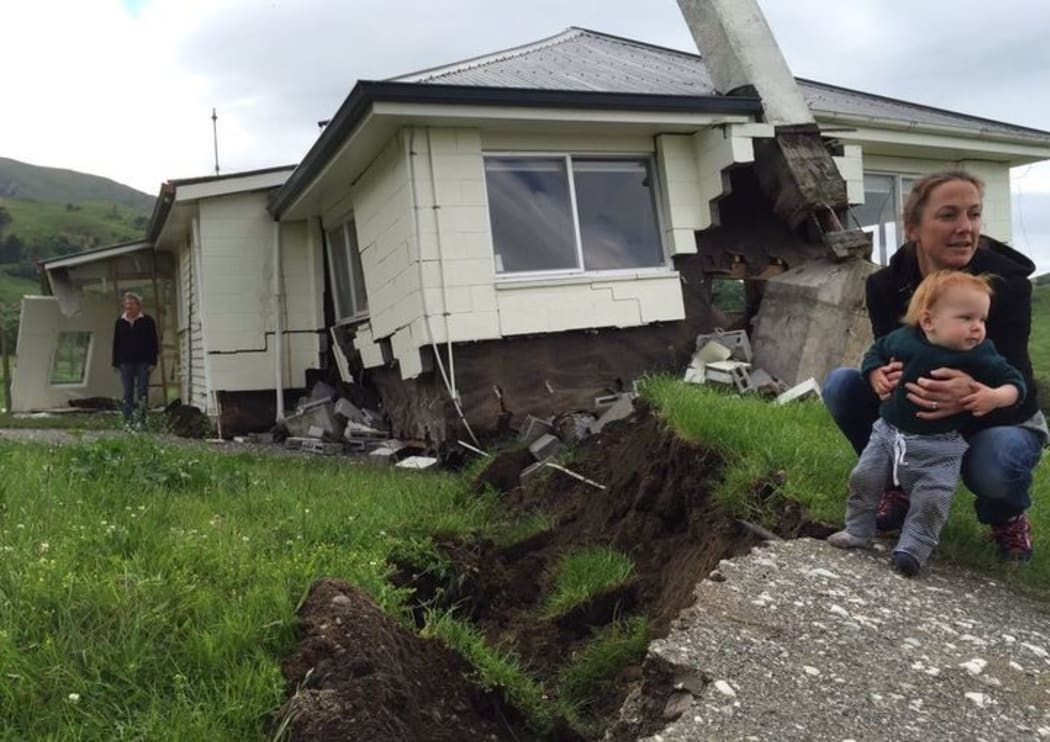
A house at Bluff Station between Blenheim & Kaikoura, which is right on the Kekerengu fault line, was demolished by the shakes. Photo: RNZ / Alex Perrottet
Minutes later, GNS scientist Pilar Villamor sat up. She called to the helicopter pilot to slow down and descend. She was marking her geological map, complete with faultlines.
The faultlines were already drawn on the earth. A house was, so clearly, not where it was supposed to be. Villamor was excited, but contained it - realising the impact on people we were about to meet.
Sue and Richard Murray smiled when we alighted at Bluff Station, built on the Kekerengu Fault. They warned us not to step on the power lines strewn across the paddock.
A house at Bluff Station btw Blenheim & Kaikoura. Right on the Kekerengu fault line. Sue Murray says Simon, a farm worker was in the house pic.twitter.com/n1gxBJqX8s
— Alex Perrottet (@alexperro) November 13, 2016
Sue Murray from Bluff Station, Kekerengu, talks through the 'house-moving' experience. Fault line was right under the house. pic.twitter.com/GrcNUimYfa
— Alex Perrottet (@alexperro) November 14, 2016
Scott Waterman, a tall wiry Englishman, got home at midnight two minutes before the ground beneath his house ripped away.
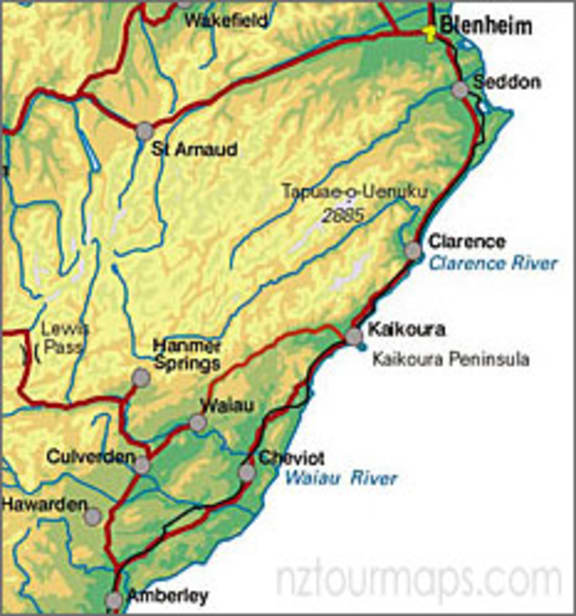
He was staying alone in a small white dwelling, across the paddock from the homestead.
It was now 2m higher and 10m away from where it used to be. Or, perhaps the house is where it was and everything else around it has moved.
Whatever the case, he jumped out and sprinted across the paddock in the dark. What was going through his head, I do not know, as he was too shaken to talk.
Sue and Richard walked me through the house, laughing at the busted grandfather clock lying face down in the hall.
In the lounge, they pointed out the broken china and glass - the carpet smelling of spoiled fine wine. They laughed.
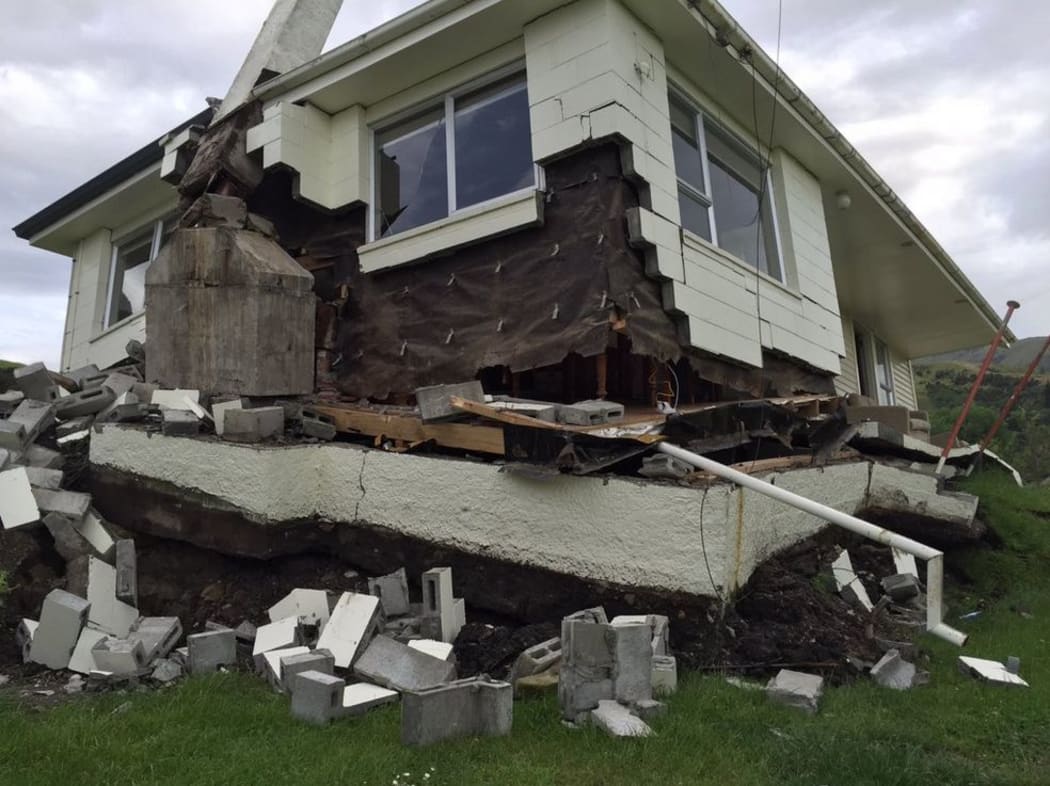
Sue and Richard Murray's house at Bluff Station between Blenheim and Kaikoura sits right on the Kekerengu fault line. Photo: RNZ / Alex Perrottet
Every piece of furniture was upturned, paintings were smashed and there were busted food packages all over the storeroom. A few chuckles more.
"You've just got to laugh," Sue said.
"The petrol tank's fallen over and we could smell that as soon as we came into the yard. There's no power, there's no phone, nothing."
"But we're all alive, and you start to realise how important it is."
While I interviewed the Murrays, helicopter pilot Regan Graham was helping collect the leaking fuel and tip the tank back up.
Ian Waker & Craig Guthrie from Kaikoura Fire Station say they've never seen damage like it. Mass evacuations today pic.twitter.com/x2oelXITAW
— Alex Perrottet (@alexperro) November 14, 2016
We got moving before long and headed to Cheviot, where the overgrown rugby ground became a helicopter refuelling station.
The only people around were a family offering coffee and tea to the travellers.
The woman's parents in Waiau had lost their house. Since the early hours of the morning, the phones were down. Closed roads and a key bridge cut off the town.
There was nothing they could do, so they grabbed supplies and went to the rugby club.
"We just couldn't do anything at home, we were helpless and couldn't get through to mum and dad, so we just came down here to at least be useful."
No one could help another mother who drove down to ask about water. Their mains were cut off, her children needed to drink and she needed to clean.
How quickly the First World loses the most basic of needs.
I was on The Terrace in Wellington when the earthquake hit. I chatted to my neighbours as we wobbled along as aftershocks rattled the grounds of the Beehive where no tall buildings could fall on us.
On Twitter, for every comment about the earthquake there was another offering a bed, a meal, a place to stay and someone to talk to.
If anyone wants or needs a bed/couch/company/drink/anything in Thorndon, let me know #eqnz
— Katie Bradford (@katieabradford) November 13, 2016
As a foreigner who has lived here for a seven years, I was blown away.
It reminded me of the mood in Sydney during the 2000 Olympics, where, for two magical weeks every social barrier came down and strangers would chat on the train as if they were friends.
Maybe that was why I did not ask for the Cheviot woman's name. I felt I knew her already.
A strong aftershock hit and she called her two young children away from the building.
They looked half excited, half worried and a bit over it. They had been there all day, attending to pilots, scientists, rescue workers and bewildered journalists like me.
They got their reward when Richie McCaw touched down and said hello.
Ppl are praising Dr Chris Henry at Kaikoura hospital. Already has bravery award for crawling into CTV bldg in Chch pic.twitter.com/vHBfvNknlK
— Alex Perrottet (@alexperro) November 14, 2016
The next stop was Kaikoura, where I met Ian Walker, the chief fire officer.
He told me they had pulled two women out of the Elms Homestead where their son and husband, Louis Edgar, had died.
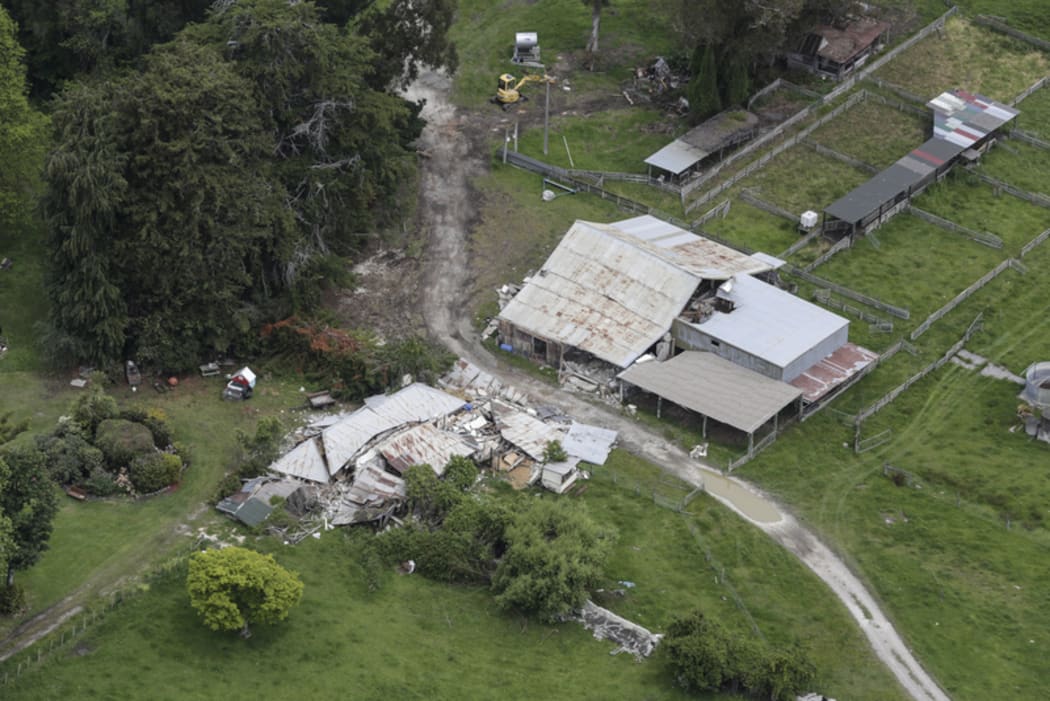
Photo: RNZ / Rebekah Parsons-King
He had put the experience behind him. His plan for the day? To make sure everyone had water.
"We've got no water in the town, so we've had to get our resources together and make sure we've got a tanker with us at all times."
Dr Chris Henry, a Christchurch earthquake hero, was up the hill at the hospital with a sticky bandage over a long cut on his arm.
He was clear, polite and focused.
He did not want to talk about the Elms Homestead - much less his injury. He wanted only to get the message out to be careful about sanitation while water and sewerage were affected.
@LeilaniJM dad cooked breakfast for all the elderly evacuated from the campground at the coastal area where he lives
— Megan Robinson (@threadnz) November 17, 2016
The earthquake rattled those in Kaikoura - tourists as well as locals.
Englishman Eddie Llewellin-Evans said it was "hairy". He was near the beach when the earthquake hit and "legged it up into the hills".
He lived in Wellington about 10 years ago and knew it was serious.
"Normally when the Kiwis are calm you don't really panic, but they were all properly panicking, which then put all the tourists slightly more on edge."
@radionz I have had numerous offers of places to stay. Got texts within 2 mins of it being announced a bldg near me was cordoned yesterday
— annikakes (@annikakes) November 17, 2016
Those same distressed and panicking people helped others around them.
They opened their doors to tourists. The Takahanga Marae housed scores of them overnight. They fed 900 with crayfish for breakfast.
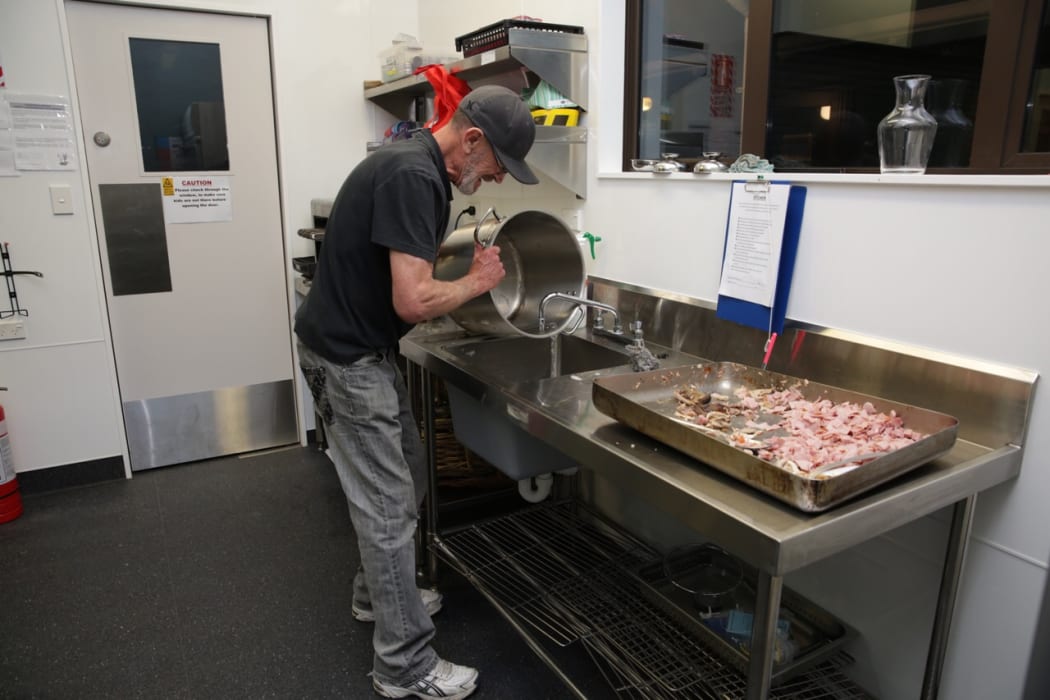
After feeding 700 people the clean up begins at Takahanga marae, local business owner Dexarelli helps out. Photo: RNZ / Rebekah Parsons-King
They were not the only ones - and it is still going on.
A knock at the door and there's the motel owner asking if I want some casserole as he knows I'm alone. These people are incredible #Kaikoura
— Chelsea Daniels (@CK_Daniels) November 17, 2016
It is in these moments you are blown away.
There is plenty of bad news around this earthquake. We all know what trouble and stress people are going through, but Kiwis are resilient, brave - and quick to offer help.

